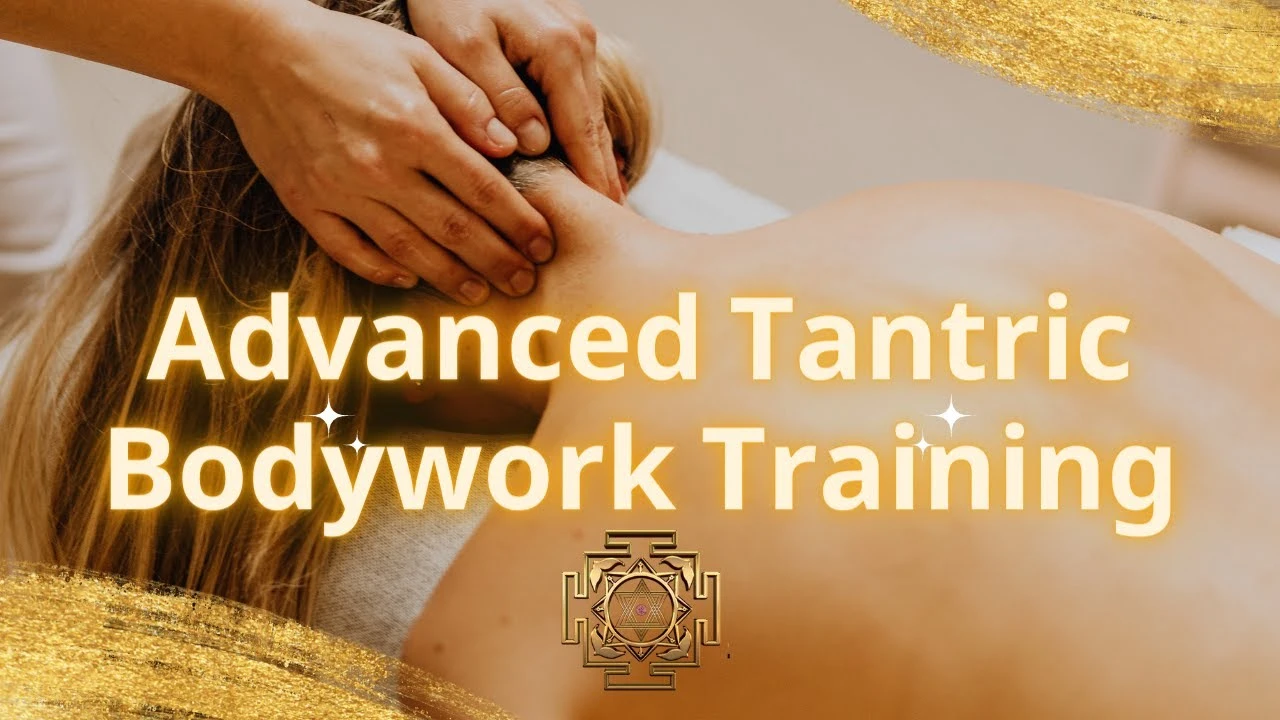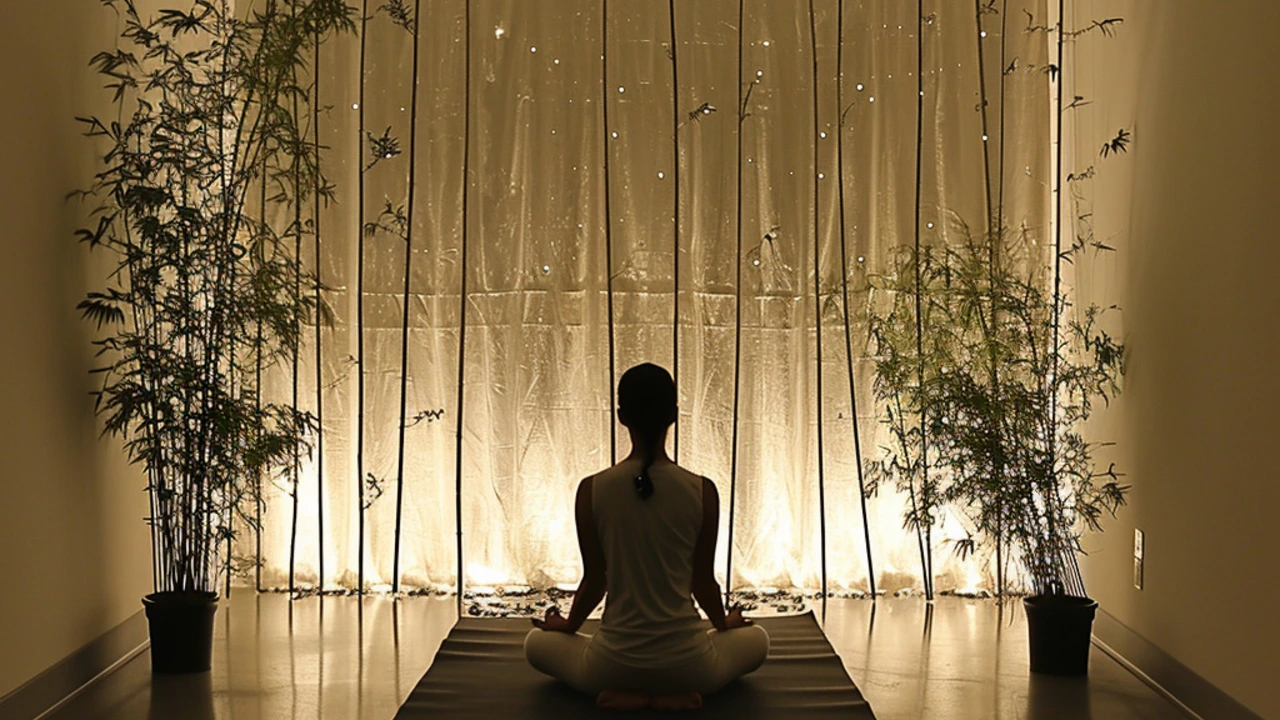Mastering Trigger Point Massage Techniques for Pain Relief

Trigger point massage is a therapeutic technique that aims to relieve pain and tension in specific areas of the body. It's used to target knots in muscles, commonly known as trigger points, which can cause discomfort and even refer pain to other regions.
In this article, we will explore the concept of trigger points, where they are commonly found, and the benefits of massage therapy. We'll also look at some practical techniques for effectively applying trigger point massage, along with tips to enhance the massage experience.
- Understanding Trigger Points
- Common Trigger Points Locations
- Benefits of Trigger Point Massage
- Techniques to Apply
- Tips for Effective Massage
Understanding Trigger Points
Trigger points, often referred to as muscle knots, are sensitive spots in tight bands of muscle fibers. These points can be incredibly tender and can cause pain both locally and in other areas of the body — a phenomenon known as referred pain. This makes understanding trigger points essential for effective pain management.
Trigger points are usually formed due to muscle overuse or injury. When a muscle is strained repeatedly or subjected to sustained tension, tiny tears occur in the muscle fibers. These tears can lead to the formation of trigger points, characterized by a hard nodule that can be felt beneath the skin. The surrounding muscle often becomes tight and shortened, leading to further pain and restricted movement.
Origins of Trigger Points
Research suggests that trigger points can develop from acute muscle injuries or through chronic muscle strain. Poor posture, repetitive motions, and even prolonged periods of inactivity can contribute to developing trigger points. For example, desk workers often experience trigger points in their shoulders and neck due to prolonged sitting and poor ergonomics.
Dr. Janet Travell, a pioneer in the study of trigger points, once said,
"If you can't explain the pain, you can't treat it effectively."Her work has been instrumental in helping therapists identify and treat these problematic areas.
Identifying trigger points involves both feeling for the knots and understanding the patterns of referred pain. Often, pressure on a trigger point will not only cause pain in the immediate area but may also send pain to a different part of the body. For instance, a trigger point in the neck might cause headaches, while one in the lower back can lead to discomfort down the legs.
Types of Trigger Points
There are several types of trigger points, each with their characteristics. Active trigger points cause pain even at rest and can be easily pinpointed due to their obvious tenderness. On the other hand, latent trigger points may not cause noticeable pain unless they're pressed, but they can restrict movement and cause muscle weakness.
Another classification includes primary trigger points, which develop in the muscle that is overworked, and secondary trigger points, which occur in a muscle compensating for the primary one. For effective treatment, it's crucial to address not just the primary site but any secondary points as well.
Common Trigger Points Locations
Trigger points, often described as muscle knots, are small, tender areas in muscles that can cause pain either locally or in distant parts of the body. These points can occur in various regions but are usually found in places where muscles are more frequently used or tend to become tense. Understanding where these points are commonly located can help in identifying and treating muscle pain more effectively.
One of the most frequent areas for trigger points is the neck and shoulders. Many of us experience tension in this region due to poor posture, stress, or prolonged use of electronic devices. The trapezius and levator scapulae muscles are common culprits here. When these muscle fibers tighten and form knots, they can lead to headaches, neck stiffness, and even referred pain to the head and upper back.
The lower back is another notable hotspot for trigger points. Muscles such as the quadratus lumborum and the erector spinae can develop knots due to improper lifting techniques, poor sitting posture, or standing for extended periods. Pain in this area often radiates to the hips or down the legs, mimicking sciatica.
The hips and buttocks also harbor several key trigger points. The piriformis muscle, for example, is notorious for developing tight knots that can irritate the sciatic nerve, leading to pain that travels down the leg. The gluteus medius and minimus muscles can also harbor trigger points that result in aching or burning sensations in the buttocks and lower back.
Moving to the arms and hands, the forearm muscles, such as the extensors and flexors, can develop trigger points from repetitive activities like typing or playing an instrument. These knots might cause pain and weakness in the hands, impacting grip strength and dexterity. Similarly, the biceps, triceps, and rotator cuff muscles in the upper arms can develop trigger points from overuse or muscle imbalances.
In the legs and feet, the calf muscles, particularly the gastrocnemius and soleus, often develop trigger points due to activities like running, walking, or even prolonged standing. These knots can cause heel pain or contribute to conditions like plantar fasciitis. The thighs, especially the quadriceps and hamstrings, are also common sites, and tight knots here might cause knee pain or limit the range of motion.
Identifying trigger points can be an insightful process. One approach involves palpating the muscle to feel for tight bands or nodules that elicit a jump response or reproduce pain. Paying attention to these common locations can significantly aid in diagnosing and treating muscle pain, ultimately leading to better physical health and well-being.

Benefits of Trigger Point Massage
Trigger point massage offers a host of benefits that can significantly improve one's quality of life. By targeting specific areas where muscle knots form, this type of massage aims to reduce pain, enhance mobility, and promote overall well-being.
One of the most compelling advantages of trigger point massage is its effectiveness in alleviating chronic pain. Many people suffer from persistent discomfort in areas like the neck, shoulders, and lower back. By applying pressure to these knots, a skilled therapist can help release tension, bringing noticeable relief to the sufferers. It's not just about the immediate effect either; over time, regular sessions can actually prevent the recurrence of pain by maintaining muscle flexibility and health.
Trigger point therapy is also known to improve blood circulation. When muscles are tight and knotted, blood flow can be restricted, which impedes the delivery of essential nutrients and oxygen to those areas. By working out these knots, massage increases circulation, promoting faster healing and reducing inflammation. This enhanced blood flow can be particularly beneficial for athletes, helping to quicken recovery times and improve performance.
Beyond physical benefits, trigger point massage can have a positive impact on mental health. Pain and discomfort often lead to stress and anxiety, conditions which in turn can exacerbate muscle tension. By alleviating pain, trigger point therapy can help break this vicious cycle, contributing to a calmer, more relaxed state of mind. This therapeutic approach can be a natural alternative to pain medications, reducing dependence on drugs while providing relief.
Moreover, the controlled and specific application of trigger point therapy helps in the release of endorphins. These natural painkillers not only help reduce pain but also foster a feeling of well-being. This makes trigger point massage a holistic approach to managing health issues, addressing both physical and emotional aspects of pain.
Another advantage is the improvement in range of motion and flexibility. Muscles that are free from knots can move more smoothly, reducing the risk of further injuries. This can be particularly beneficial as people age and naturally lose some muscle elasticity and joint flexibility. Maintaining a good range of motion is key to staying active and independent in later years.
In some cases, trigger point therapy can even aid in improving posture. Muscle imbalances caused by knots can pull the body out of alignment, leading to poor posture. By correcting these imbalances, trigger point massage helps the body return to a more natural and healthy posture.
Lastly, trigger point massage can address specific discomfort caused by activities that involve repetitive motions. For example, office workers who spend their days typing on computers can develop trigger points in their hands, wrists, and forearms. Targeted massage in these areas can relieve the aches and pains associated with these repetitive tasks, enhancing overall workplace comfort and productivity.
Dr. Janet Travell, a pioneer in the study of trigger points, famously said, "The pain of myofascial trigger points is the scourge of mankind." Her work emphasized the significant impact these points can have on day-to-day living.
In conclusion, the benefits of trigger point massage are both broad and deep, influencing various aspects of health and well-being. Whether you’re looking to alleviate chronic pain, improve athletic performance, or simply enhance your quality of life, trigger point therapy could be a valuable addition to your wellness routine.
Techniques to Apply
When it comes to trigger point massage, the right techniques can make a significant difference in relieving pain and improving muscle function. One of the fundamental methods is the ischemic compression technique. This involves applying direct pressure to the trigger point, using fingers, knuckles, or even an elbow, until discomfort is felt. Ideally, this pressure is held for 30 to 90 seconds, allowing the muscle fibers to release and the knot to dissipate.
Another effective technique is stripping. This method requires the therapist to apply firm pressure along the length of the muscle fiber. By slowly moving fingers or thumbs from one end of the muscle to the other, blood flow is stimulated and tension is reduced. This approach can be particularly beneficial for larger muscle groups such as the back or legs.
Manual techniques aren't the only option; tools such as massage balls or foam rollers can also be highly effective. For at-home care, using a tennis ball against a wall or on the floor can help apply consistent pressure to the trigger point. For a more controlled approach, a specialized massage ball with a firm texture can provide deeper penetration. Foam rollers, on the other hand, are excellent for broad muscle groups. By slowly rolling back and forth over the area, the pressure is spread evenly, making it easier to manage tenderness.
Self-care practices should also include stretching. After working out a trigger point, the muscle fibers may need to be elongated to prevent the knot from returning. Static stretches, held for at least 30 seconds, help maintain flexibility and increase blood circulation to the area. For example, stretching the neck muscles after treating neck trigger points can assist in long-term relief.
"Trigger point therapy has shown significant effectiveness in reducing chronic pain and improving the quality of life for many individuals," according to a study published in the Journal of Bodywork and Movement Therapies.
In addition to the hands-on techniques, heat and cold therapy can be combined for optimal results. Applying a heating pad or warm towel to the affected area before massage helps relax the muscle and makes the tissue more pliable. Conversely, using an ice pack after the session can help reduce inflammation and soothe the treated area.
Another technique known as pin and stretch involves pinning the trigger point with manual pressure while gently moving the muscle through its natural range of motion. This dynamic approach not only breaks down the adhesion but also re-educates the muscle on proper movement patterns, which can be particularly useful for sports-related injuries.
Lastly, hydrating adequately before and after massage sessions is crucial. Muscles require proper hydration to function effectively and to flush out the toxins that are released during massage. Drinking plenty of water helps maintain elasticity in the muscle fibers and supports overall recovery.

Tips for Effective Massage
When it comes to trigger point massage, a few well-thought-out tips can make a significant difference in the effectiveness of your therapy. First and foremost, it's essential to communicate openly with your therapist. Let them know about any pain points, previous injuries, or areas that need special attention. Clear communication ensures that the massage is both safe and effective.
Next, it is crucial to use the right amount of pressure. Too much pressure can cause discomfort, while too little may not achieve the desired results. A good therapist will start with moderate pressure and adjust based on your feedback. It's always okay to speak up if you need a lighter touch or more intensity.
Hydration plays a key role in the success of your massage therapy sessions. Drinking plenty of water before and after your massage helps hydrate your muscles and flush out toxins released during the process. Experts often recommend having a glass of water immediately after your session.
An often overlooked tip is to integrate relaxation techniques such as deep breathing exercises into your session. Breathing deeply helps to release muscle tension and promote relaxation, making the massage more effective. Focus on slow, deep breaths to aid the therapist in loosening those stubborn knots.
Utilizing heat therapy before and after the massage is another excellent tip. Applying a warm compress to the target area helps to soften and relax the muscles, making them more receptive to the massage. After the session, heat can also soothe any mild soreness that may arise.
According to Dr. Janet Travell, a pioneer in trigger point therapy, 'Relief from trigger points can dramatically improve physical function and quality of life.'This highlights the importance of proper technique and tips, as the benefits extend beyond mere pain relief.
Stretching is another beneficial practice to consider after your trigger point massage. Gentle stretching helps to maintain muscle flexibility and prevent the recurrence of tight spots. Incorporating a regular stretching routine can enhance the effects of your massage therapy.
Setting the right mood for your massage session can also make a huge difference. A calm, quiet environment with soothing music can help you relax and get into the right mindset. The more relaxed you are, the more effective the therapy will be.
Lastly, consistency is key. Regular trigger point massage sessions can provide long-term benefits and help manage chronic pain more effectively. Keep a schedule that works for you, whether it's weekly or bi-weekly, to ensure lasting results.





